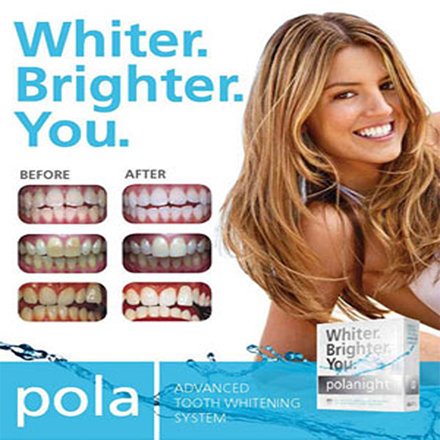
Risk associated with Tooth Whitening treatment
The most common side effects associated with laser speed tooth Whitening procedures & tooth bleaching treatments are increased sensitivity of the teeth and irritation of the gums, which tend to resolve once the Dental whitening or Dental Bleaching is stopped.
Hypersensitivity
The low pH of bleach opens up dentinal tubules and may result in dentine hypersensitivity, bringing about hypersensitive teeth. It manifests as increased sensitivity to stimuli such as hot, cold or sweet. 67 – 78% of the patient’s experience teeth sensitivity after in office bleaching with hydrogen peroxide in combination with heat.
Sensitivity of teeth can persist up to 2 days after teeth bleaching cessation. However, it varies from person to person. A longer duration of hypersensitivity has been reported 10 days post-bleaching.
Recurrent treatments or use of desensitising toothpastes may alleviate discomfort, though there may be occurrences where the severity of pain discontinues further treatment. Potassium nitrate and sodium fluoride are used to reduce tooth sensitivity following bleaching.
Irritation of mucous membranes
Hydrogen peroxide is an irritant and cytotoxic. At concentrations of 10% or higher, hydrogen peroxide is potentially corrosive to mucous membranes or skin and can cause a burning sensation and tissue damage.
Chemical burns from gel bleaching (if a high-concentration oxidizing agent contacts unprotected tissues, which may bleach or discolor mucous membranes). Tissue irritation most commonly results from an ill-fitting mouthpiece tray rather than the tooth-bleaching agent.
Uneven results
After Dental teeth bleaching or bleaching of teeth with night trays, it is normal to have uneven results. With time, the color will appear more even. To avoid this from happening it is important to avoid making some common post-bleaching mistakes, such as consuming foods and beverages that stain the surface of your teeth.
Return to original pre-treatment shade
Nearly half the initial change in color provided by an intensive in-office treatment (i.e., 1 hour treatment in a dentist’s chair) may be lost in seven days. Rebound is experienced when a large proportion of the tooth whitening has come from tooth dehydration (also a significant factor in causing sensitivity). As the tooth rehydrates, tooth color ‘rebounds’ back toward where it started.
Over-bleaching
Over bleaching, known in the profession as “bleached effect”, particularly with the intensive treatments (products that provide a large change in tooth colour over a very short treatment period, e.g., 1 hour). Too much bleaching will cause the teeth to appear very translucent.
Damage to enamel
Home tooth bleaching treatments can have significant negative effects on tooth enamel. Study has been done and there is evidence that high concentration of carbamide peroxide can damage the enamel surface.
Although the effect on enamel is less detrimental than seen after phosphoric acid etch, the increased roughness of the surface may make teeth more susceptible to extrinsic discolouration after bleaching.
Weakened Dentin
Intracoronal bleaching with 30% hydrogen peroxide decreases micro-hardness of dentin. Thus, weakening the mechanical properties.
Effects on existing restorations
Dental Amalgam – Exposure to carbamide peroxide solutions increase mecury release for one to two days.
Resin Composite – bond strength between enamel and resin based fillings weakened.
Glass Ionomer and other cements – Study suggesting that solubility of these materials may increase.
Bleachorexia
When bleaching is abused and an individual develops an unhealthy obsession with whitening, the term bleachorexia or whitening junky has been used. The condition is characterized by repeated bleaching even though the teeth are already white and will not get any whiter.
This condition is somewhat similar to body dismorphic disorder. The individual perceives their teeth never to be white enough, despite repeated bleaching. A person with bleachorexia will typically continually request more bleaching services or products from the dental professional.
It has been recommended that a target shade be agreed before starting bleaching treatment to help with this problem.
Other risks
Hydrogen peroxide might act as a tumour promoter Intracoronal internal bleaching may also cause cervical root resorption, it is more commonly observed in teeth that are treated with thermo-catalytic bleaching method. Due to extensive removal of intracoronal dentin, tooth crown fracture can happen after intracoronal bleaching.
The International Agency of Research on Cancer (IARC) has concluded that there is insufficient evidence for the carcinogeni-city of hydrogen peroxide.
The chemical is now under Group 3: Unclassifiable as to carcinogenicity to humans. The genotoxic potential of hydrogen peroxide has been evaluated recently. Oral health products that contain or release hydrogen peroxide up to 3.6% H2O2 is not likely to increase cancer risk in individuals.
Please feel Free to ask us any further questions about Dental Tooth Whitening or for a Free Tooth Whitening Consultation….
Dr. Goswami’s — Delhi Dental Center – one of the top specialized Laser Speed Tooth Whitening Treatment clinics in New Delhi India, welcome people looking for Laser speed Dental-Tooth-Teeth whitening or Dental Bleaching procedures for their stained or dis-coloured teeth.
Same team — Affordable cost — Same location since last 20 yrs. (est. 2000). That’s the real beauty of dental implants from Delhi Dental Center.

